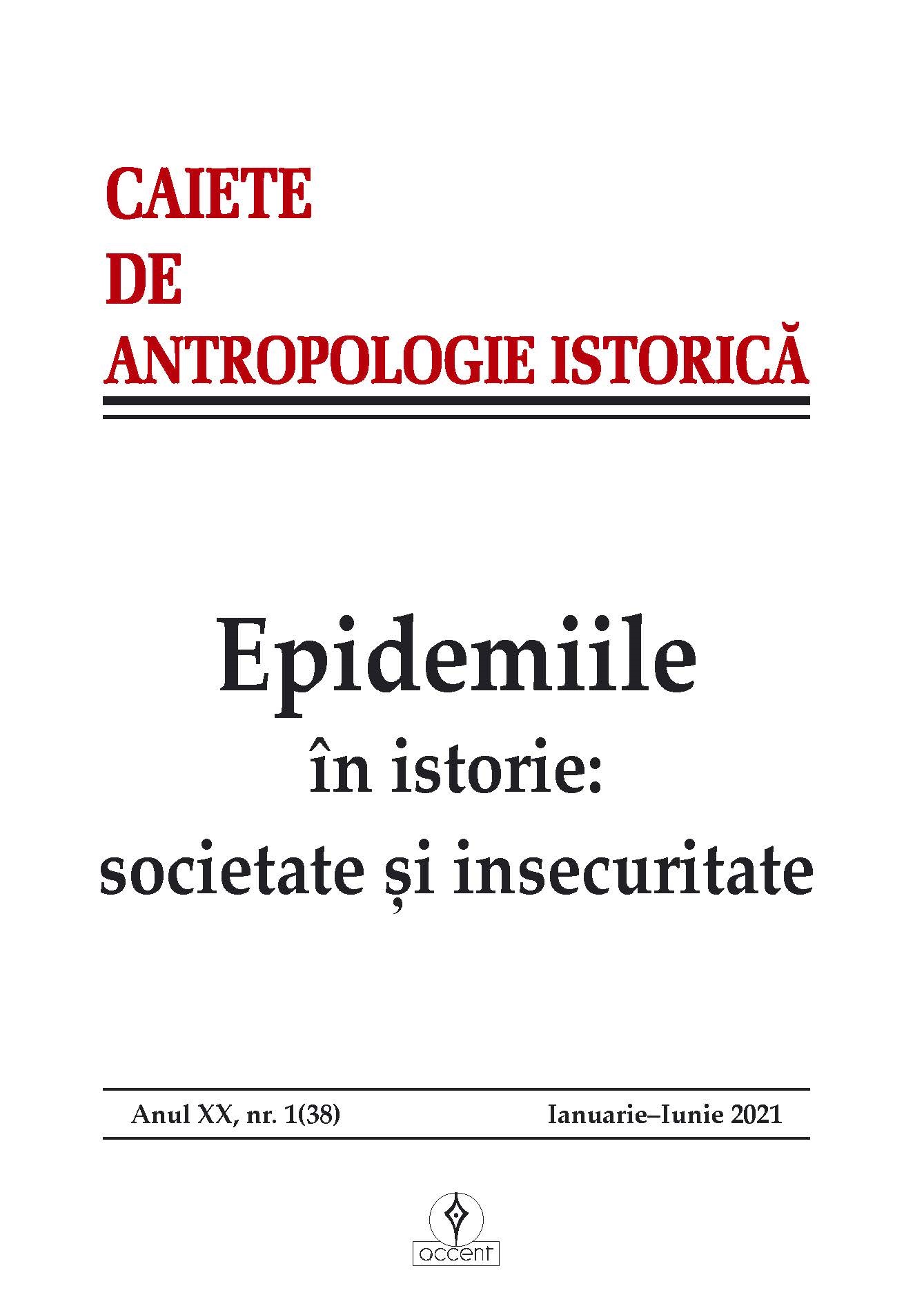Epidemiile de ciumă în societatea românească (secolele XV–XIX)
Plague epidemics in Romanian society (15th–19th centuries)
Author(s): Toader NicoarăSubject(s): Social history, Modern Age, Health and medicine and law, 15th Century, 16th Century, 17th Century, 18th Century, 19th Century
Published by: Accent Publisher
Keywords: epidemic; contagion; death; anxiety; insecurity; medical care; popular piety; pilgrimages; quarantine; medicalization;
Summary/Abstract: The plague, “this great figure of the past,” in the words of historian Bartholomew Bennassar, was one of the most threatening calamities to befall human communities. On the scale of the European continent, the plague manifested itself over a cycle of about four centuries (from the black plague of the fourteenth century to the beginning and middle of the eighteenth century, for Western Europe, and the first decades of the nineteenth century, for the space of Eastern Europe). According to experts, the plague had the worst demographic consequences in pre-industrial societies, killing a third or, according to some statistical estimates, half of European populations. The scourge was caused by a bacillus, Yarsinia pestis, named after the French doctor Alexandre Yarsin, who discovered it in the laboratory at the end of the 19th century. The most common was bubonic plague, with a mortality of about 70–80%, among the contaminated cases, while septic and pulmonary plague reached a mortality rate of 100%. All episodes of the plague were accompanied by other misfortunes, such as collective panic, famine, wars, social violence: robberies, abuses, crimes and arson. Western society succeeded in eradicating the plague on the European continent in the early 18th century, benefiting from advances in the medical sciences, more effective hygiene and treatment measures. The plague haunted the center and southeast of the continent until the third decade of the nineteenth century. Heterogeneous environments, marked by the most diverse beliefs and superstitions, were crossed by panic of proportions, due to the large number of victims. Ecclesiastical and secular discourses showed visions of the causes and consequences of plague epidemics. A series of chroniclers and chroniclers left descriptions, more or less consistent, about the terrible manifestations of the plague in Transylvania and the Romanian Lands. The collective memory has preserved the memory of this scourge in a series of names of places which recall the confrontation with this terrible epidemic.
Journal: Caiete de Antropologie Istorică
- Issue Year: 2021
- Issue No: 38
- Page Range: 34-73
- Page Count: 40
- Language: Romanian

